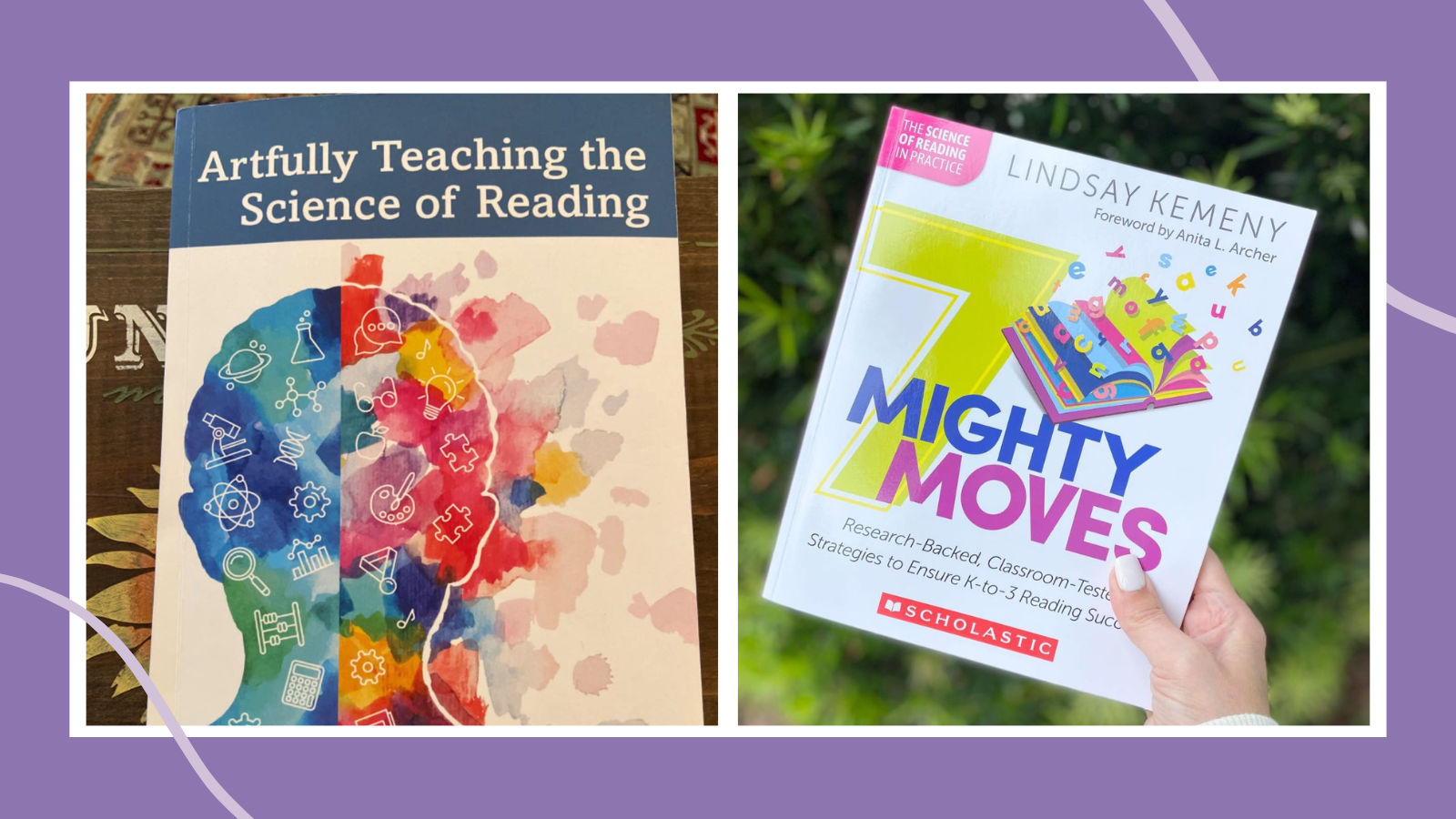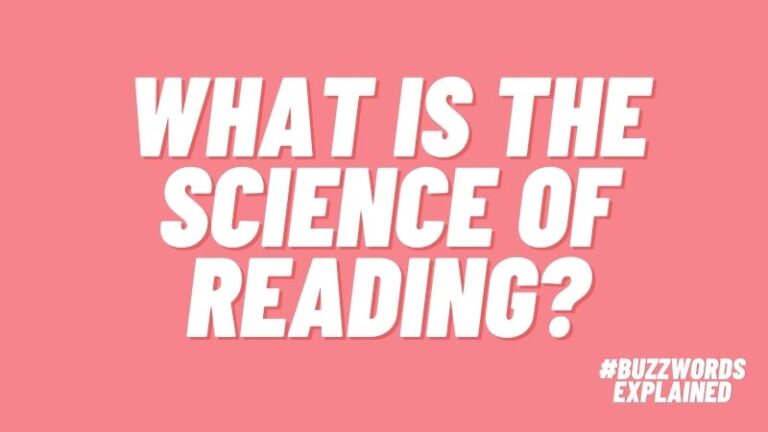Teachers of all grades need to know about the science of reading. From making sense of phonics and how the English language really works to figuring out what research says about how to best build kids’ background knowledge and comprehension skills, there’s lots to learn. Luckily there are tons of great science of reading PD books available to help you. Of course, you’re beyond busy, so we vetted both classic and new titles to help you narrow down the best picks for your TBR pile. Just grab your sticky notes and highlighters.
Science of Reading PD Books
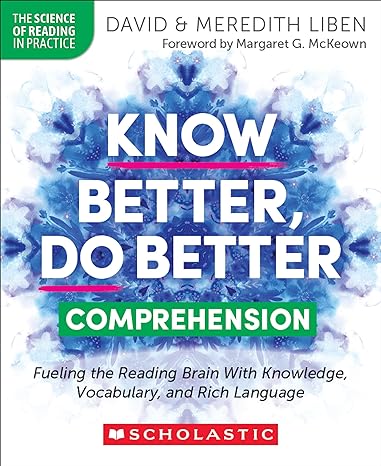
1. Know Better, Do Better: Comprehension by David and Meredith Liben
This new title from a powerhouse pair is at the top of our reading lists. They founded a New York City school that became a model for science of reading–aligned teaching, and they’re experts at translating research into classroom-friendly advice. Read this book to learn priority routines that will have a big impact on kids’ reading comprehension—and help them delight in language and reading too. (Their first book, Know Better, Do Better: Teaching the Foundations So Every Child Can Read, is also a longtime favorite science of reading PD book, even though it’s currently out of print.)
Buy it: Know Better, Do Better at Amazon
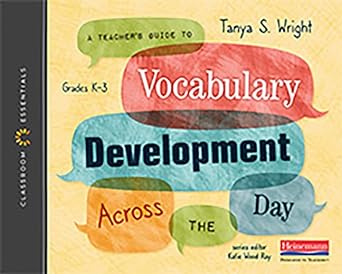
2. A Teacher’s Guide to Vocabulary Development Across the Day by Tanya S. Wright
Not all researchers can successfully bridge the gap between their research and the ready-to-use advice busy teachers need. But since this author was a longtime kindergarten teacher, she gets it! Elementary teachers can read this in a weekend and start incorporating strategies to boost kids’ vocabulary on Monday morning as part of all the lessons you’re already doing.
Buy it: A Teacher’s Guide to Vocabulary Development Across the Day at Amazon
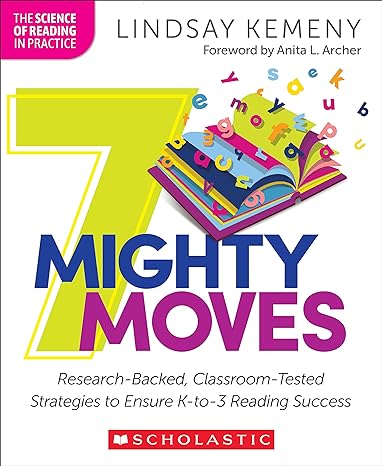
3. 7 Mighty Moves: Research-Backed, Classroom-Tested Strategies to Ensure K-to-3 Reading Success by Lindsay Kemeny
This author is so relatable: She was a balanced literacy advocate who took a deep dive into the science of reading to support her own child’s journey with dyslexia—and came out a different teacher. If you’ve been searching for easy-to-read science of reading PD books aimed at the primary grades, you’ll love this title. The QR codes that link to demonstration videos are the perfect bonus.
Buy it: 7 Mighty Moves at Amazon
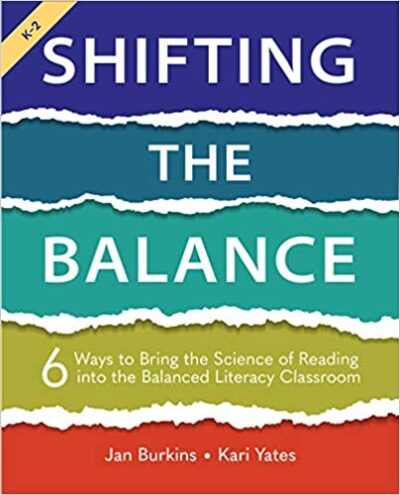
4. Shifting the Balance: 6 Ways To Bring the Science of Reading Into the Balanced Literacy Classroom by Jan Burkins and Kari Yates
This book, focused on grades K-2, will help you rethink some of your balanced literacy classroom practices without feeling like you have to start from scratch. Each chapter calls out common misconceptions, explains research, and gives super-manageable suggestions for “making the shift.” Tons of teachers call it a game changer! (The authors also have amazing online resources.)
Buy it: Shifting the Balance, Grades K-2 at Amazon
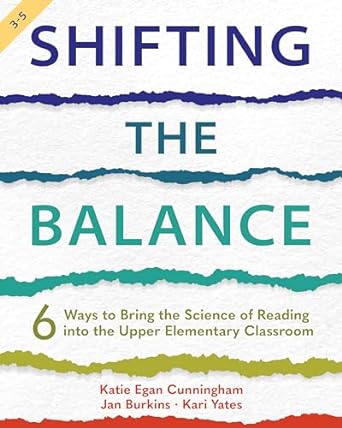
5. Shifting the Balance: 6 Ways To Bring the Science of Reading Into the Upper Elementary Classroom by Katie Egan Cunningham, Jan Burkins, and Kari Yates
Applying the science of reading to upper elementary teaching is its own beast. This title maintains the same helpful format as the K-2 book but focuses on what research suggests we do to support comprehension, vocabulary, fluency, and decoding once kids have moved past the earliest stages of learning to read to grades 3-5.
Buy it: Shifting the Balance, Grades 3-5 at Amazon
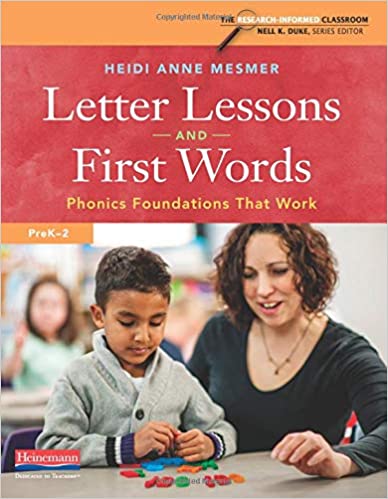
6. Letter Lessons and First Words: Phonics Foundations That Work by Heidi Anne Mesmer
If you want to improve your grasp of phonics instruction, Heidi Mesmer definitely has your back. This book gives a crash course on the English language for teachers. (For example, if you constantly forget what a diphthong is, this one is for you!) There’s a helpful phonics lesson framework to use over and over. Plus, we love all the easy activities and routines.
Buy it: Letter Lessons and First Words at Amazon
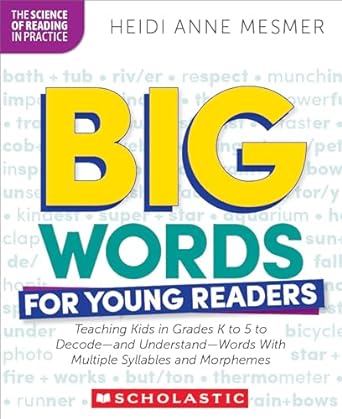
7. The Science of Reading in Practice: Big Words for Young Readers by Heidi Anne Mesmer
Hooray! If you need straightforward guidance about how to help your students learn more about dividing long words into syllables and using knowledge of syllable types and morphology to read and comprehend, this is the book for you.
Buy it: Big Words for Young Readers at Amazon
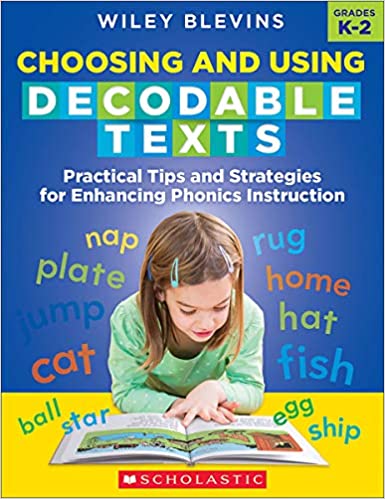
8. Choosing and Using Decodable Texts: Practical Tips and Strategies for Enhancing Phonics Instruction by Wiley Blevins
Quick, readable, and research-driven, this is a great resource for K-2 teachers to get a crash course on why decodable text is an essential tool for science of reading–aligned instruction. Lovers of printable books will appreciate the included black-line masters.
Buy it: Choosing and Using Decodable Texts at Amazon
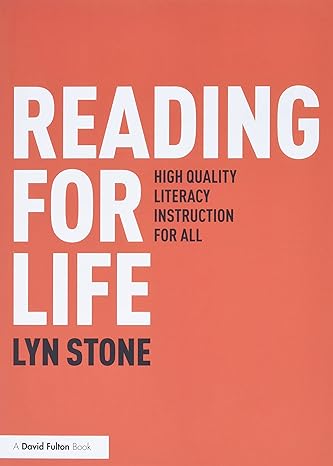
9. Reading for Life: High Quality Literacy Instruction for All by Lyn Stone
Lyn Stone is an Australian literacy expert who does not hold back her views on effective, research-based reading instruction vs. ineffective practices. This is an easy-to-digest narrative about how reading instruction has evolved that offers clear guidance about what to do now. It would make a great summer read for teachers eager to shift their practice toward the science of reading. Her companion title Spelling for Life: Uncovering the Simplicity and Science of Spelling is super-practical for building your own knowledge about English spelling.
Buy it: Reading for Life at Amazon
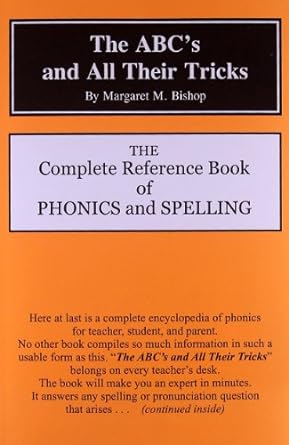
10. The ABC’s and All Their Tricks by Margaret M. Bishop
Clear a spot to keep this handy little reference volume on your desk at all times. It’s a collection of straightforward explanations and word lists for so many phonetic patterns, from short and long vowels to confusing situations like “ch as in Chicago.”
Buy it: The ABC’s and All Their Tricks at Amazon
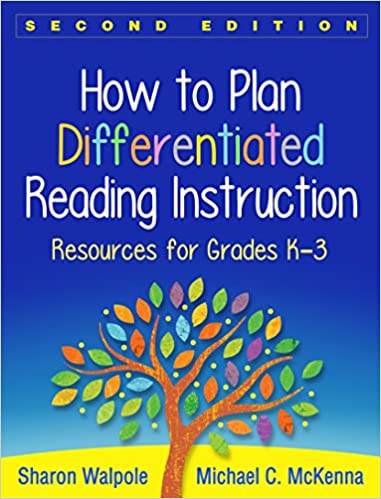
11. How To Plan Differentiated Reading Instruction: Resources for Grades K-3 by Sharon Walpole and Michael C. McKenna
Juggling kids’ needs is tricky. In this book, chapters cover how to use research to plan small groups that target phonological awareness, word recognition and decoding, fluency, and comprehension. This updated edition is full of invaluable practical advice.
Buy it: How To Plan Differentiated Reading Instruction: Resources for K-3 at Amazon
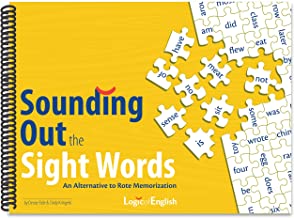
12. Sounding Out the Sight Words: An Alternative to Rote Memorization by Denise Eide and Cindy Kringelis
Here’s a science of reading PD book focused on one concrete action step. Brain research encourages teaching kids to rely on letter sounds to read high-frequency words. These lessons make it easy to update your approach.
Buy it: Sounding Out the Sight Words at Amazon
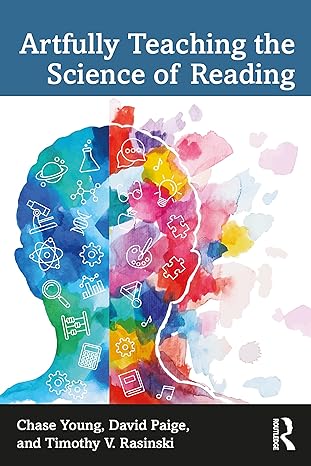
13. Artfully Teaching the Science of Reading by Chase Young, David Paige, and Timothy V. Rasinski
Grab this title if you’re a teacher who’s feeling a bit down about being beholden to a highly scripted reading curriculum. You’ll love these experts’ “both/and” view on how teaching means using research-based instruction while thoughtfully engaging and responding to kids. Examples from real classrooms help you picture how it’s possible for your own teaching to be both science-based and artfully inspired.
Buy it: Artfully Teaching the Science of Reading at Amazon
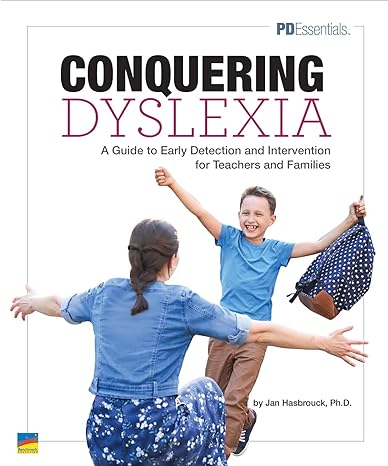
14. Conquering Dyslexia: A Guide to Early Detection and Intervention for Teachers and Families by Jan Hasbrouck
Having a basic understanding of dyslexia is essential for all teachers—and if you teach reading, you’ve absolutely got to know more. This helpful handbook from a researcher who’s also a parent of a child with dyslexia is an invaluable reference. It includes information about looking for and diagnosing dyslexia and well as strategies for teaching students with dyslexia.
Buy it: Conquering Dyslexia at Amazon
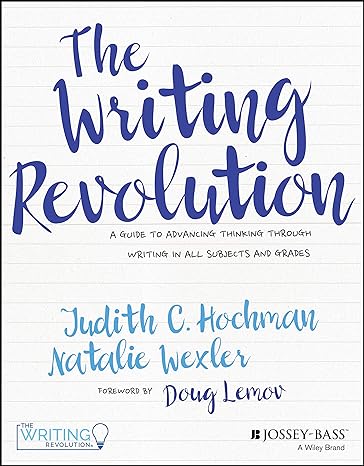
15. The Writing Revolution: A Guide to Advancing Thinking Through Writing in All Subjects and Grades by Judith C. Hochman and Natalie Wexler
As we take a closer look at our reading instruction, naturally we consider writing instruction too. The Hochman Method of writing instruction aims to turn students into strong communicators through focusing on writing at the sentence, paragraph, and composition level throughout the school day. If you feel like you’ve been “assigning writing but not teaching it,” you’ll really appreciate this book.
Buy it: The Writing Revolution at Amazon
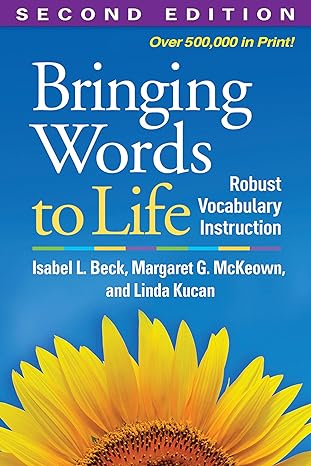
16. Bringing Words to Life: Robust Vocabulary Instruction by Isabel L. Beck, Margaret G. McKeown, and Linda Kucan
This is one of those reliable science of reading PD books you can return to again and again. It shares invaluable explanations of research about effective vocabulary instruction. It also includes lots of engaging routines you can use with kids right away.
Buy it: Bringing Words to Life at Amazon
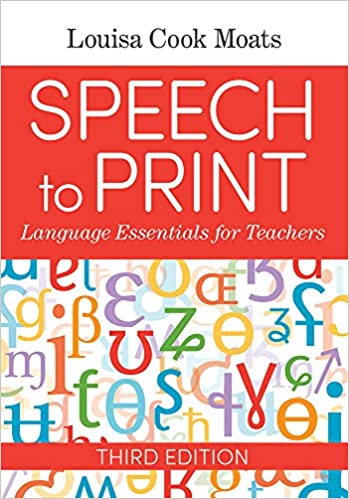
17. Speech to Print: Language Essentials for Teachers by Louisa Cook Moats
This gold-standard textbook from a reading research guru was updated in 2020. Now it has lots of practical guidance and helpful charts too.
Buy it: Speech to Print, Third Edition at Amazon
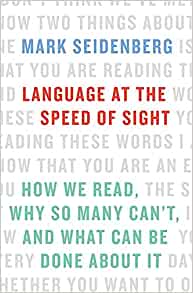
18. Language at the Speed of Sight: How We Read, Why So Many Can’t, and What Can Be Done About It by Mark Seidenberg
Fill your coffee mug and get ready to take lots of notes. This is a highly detailed explanation of the reading brain from a cognitive neuroscientist.
Buy it: Language at the Speed of Sight at Amazon
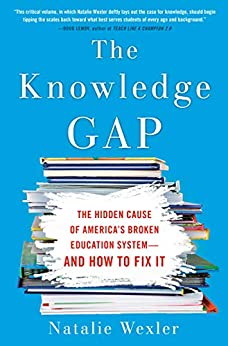
19. The Knowledge Gap: The Hidden Cause of America’s Broken Education System—and How To Fix It by Natalie Wexler
Natalie Wexler shares an emphatic perspective on what research says about the impact of background knowledge on students’ reading (and overall school) success. Do you want to be able to stick up for content-area teaching for kids? If so, you’ll love this one.
Buy it: The Knowledge Gap at Amazon
